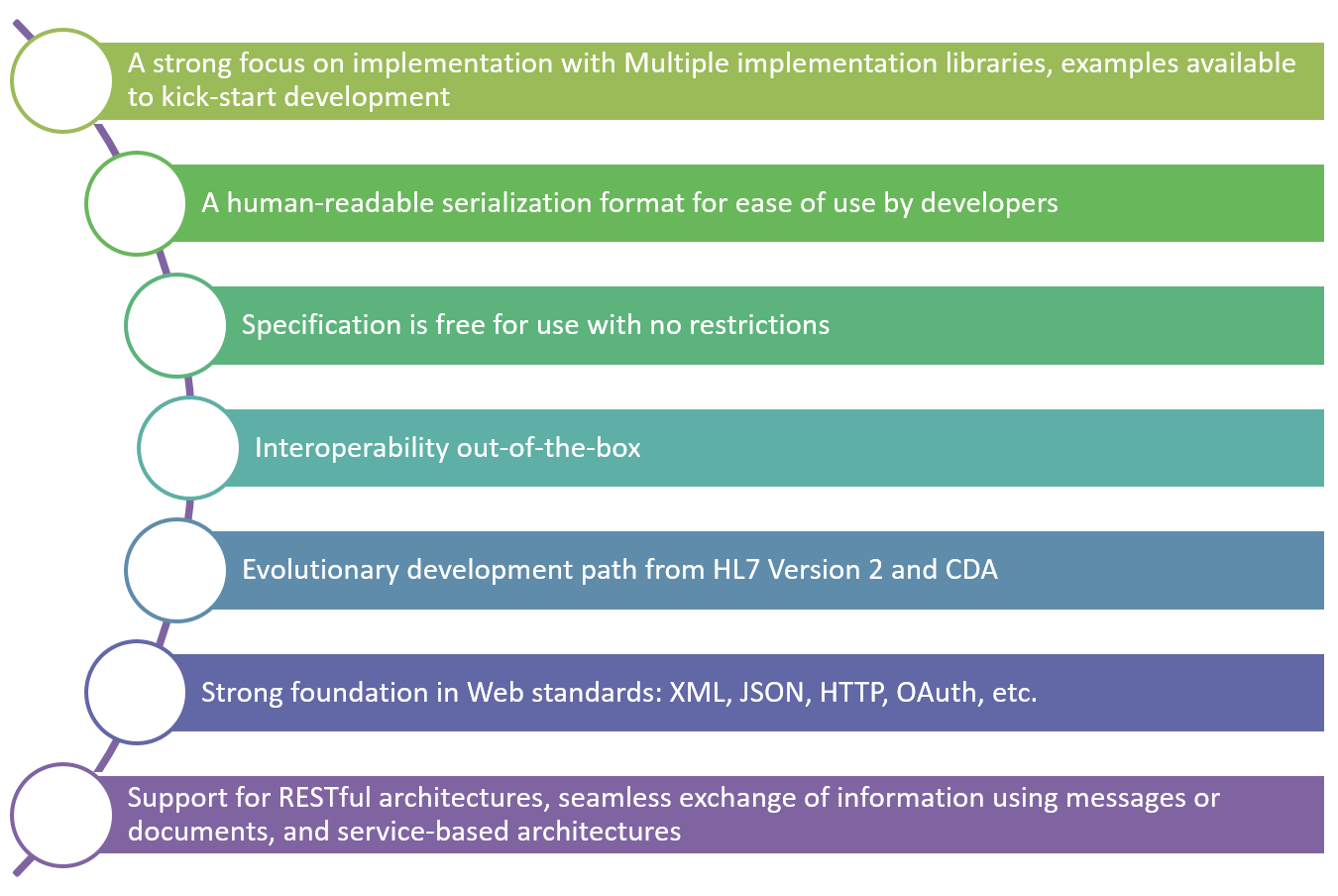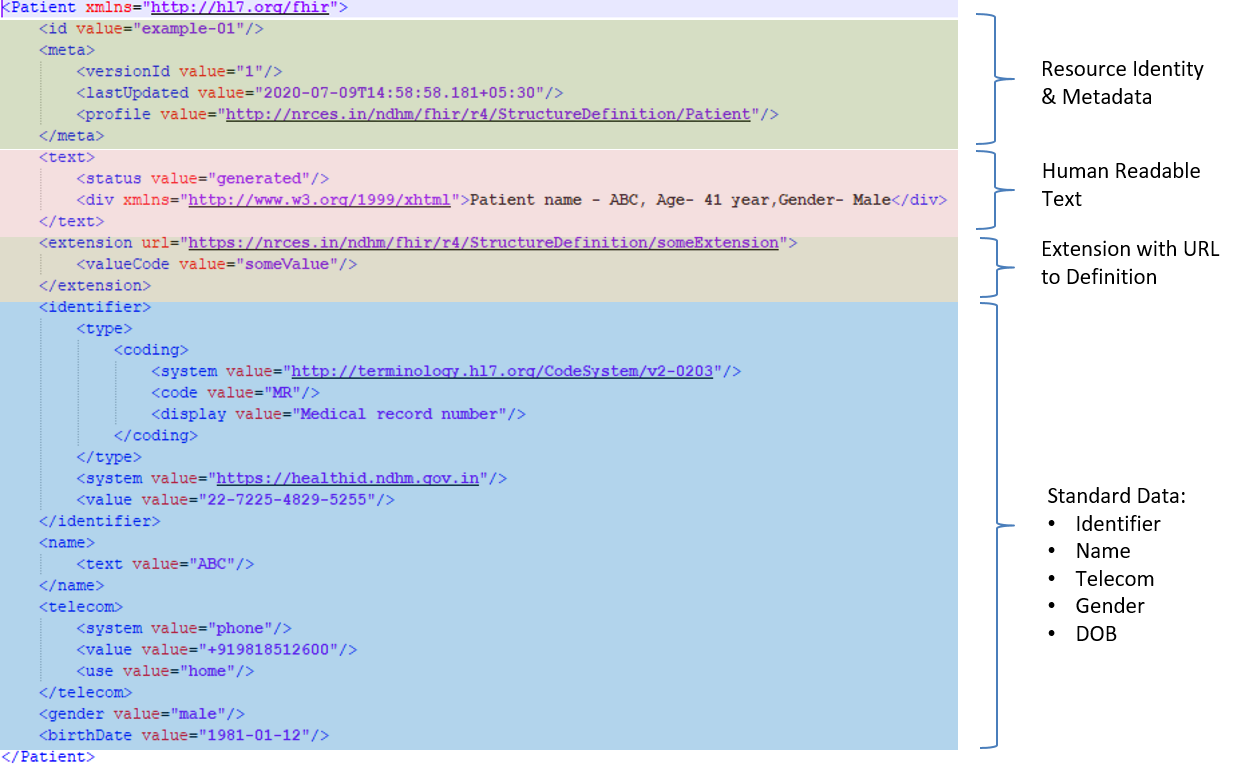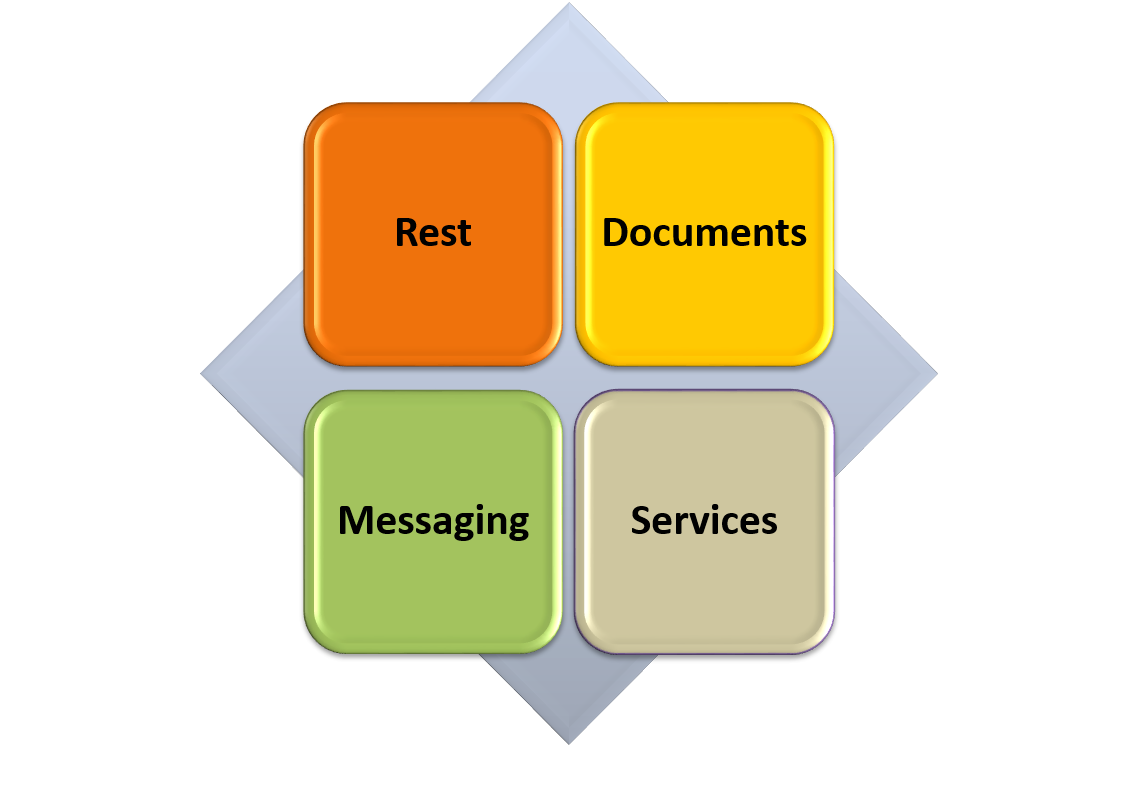About
HL7 Fast Healthcare Interoperability Resources Specification (FHIR) is a next generation standards framework created by HL7. FHIR is an interoperability standard intended to facilitate the exchange of healthcare information between healthcare providers, patients, caregivers, payers, researchers, and anyone else involved in the healthcare ecosystem.
FHIR combines the best features of HL7's v2, HL7 v3 and CDA product lines while leveraging the latest web standards and applying a tight focus on implementability. It consists of 2 main parts – a content model in the form of 'resources', and a specification for the exchange of these resources in the form of real-time RESTful interfaces as well as messaging and Documents.
Why FHIR ?

FHIR Resource
A resource is the smallest and meaningful unit of exchange. FHIR makes use of defined set of resources to support information sharing by a variety of means. A resource is made up of elements that holds data of a specific data type.
FHIR defines resources for clinical and administrative content (e.g. Observation, Patient, etc.) as well as for infrastructure purposes. Some of these infrastructure resources are used to define the standard itself.

FHIR Interoperability Paradigms
In addition to defining Resources as the forms for data exchange, FHIR also defines a set of interfaces by which systems can share that information. FHIR supports exchange through REST interfaces, exchanging Documents, sending and receiving Messages and by exposing and invoking Services.

Resources
Get Standard
You can freely use, redistribute, and create derivative specifications or implementation-related products and services of FHIR. For more information on license and terms please visit https://www.hl7.org/fhir/license.html
References









